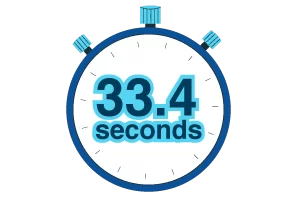
OLS Challenge
What is OLS?
It stands for One Leg Strong, a test that measures the time that a person can stand on one leg11
How to do it?
You must stand on one leg without any assistance, raising the other leg off the grounds, and do not let your legs touch each other. You may place arms across your chest with your hands touching your shoulders or spread your arms widely. Maintain the balance and stands as long as you could.



How long can an average person stand on a leg?

Do you ever wonder what is the longest records for participants that took part in OLS Challenge organized by
Mega BiO-LiFE last year 2021?
The longest record is 87 minutes.
How about you?
If you haven’t tried it before, make sure you do it safely! You can either start by standing near to the wall so that you can hold on to it when you are unstable or get other people to assist you.
Why performs OLS?
OLS is a simple balance test to see if you have strong bones and joints. This test is easy to perform and requires no special equipment, and it correlates well with other balance tests. 1 Loss of balance could be due to the aging process or due to degenerative joint changes in the spine and lower limbs which reduces reflexes, and muscle weakness. 2
Practicing OLS not just helps to improve muscle strength and balance, but also enables people to be more alert about their bones and joints conditions, and to take good care of them to prevent from *osteoporosis and *osteoarthritis.
While you’re practicing OLS, take advantage of this opportunity to enter our OLS challenge for a chance to win great prizes! For more details, you may check out: https://biolife.com.my/olschallenge/
*Osteoporosis – a bone disease that causes bones to become fragile
*Osteoarthritis – degenerative joint diseases that worsen over the time
References
- Michikawa, T., Nishiwaki, Y., Takebayashi,T., Toyama, Y., 2009. One-leg standing test for elderly populations. Journal of Orthopaedic Science, 14(5): 675-685
- Clark, M.S., 2007. The Unilateral Forefoot Balance Test: Reliability and validity for measuring balance in late midlife women. J Physiother., 35(3):110–118




